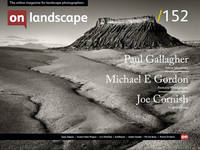Adam Fowler chooses one of his favourite images

Adam Fowler
I am a photographer working in landscape and documentary. I have always gravitated towards forms of landscape photography because it allows me plenty of time for contemplation and I enjoy the times of solitude that it provides. I used to work in the video games industry and disappearing into the landscape was a great way to escape the fast paced, stressful work environment video games is. Doing something completely on my own was a great counterpoint against building something with a team consisting of hundreds of people. I don't work in video games anymore I just disappear more often.
As with many people who write articles of this ilk, I don't think I can reduce the world of photography down to a single image. For a start outside the context of photo-journalism, I am not sure of the power of the single image. Most of the work I admire and most of what I do myself comes in the form of a series of images. A series allows for a story arc, a more detailed investigation of subject matter.
As my own photographic interests are in the built environment and the ways we interact with our surrounding landscape I have chosen an image from the project Souvenir d'un Futur by Laurent Kronental. I came across this project at the beginning of last year and it really resonated me.
For four years Laurent Kronental captured the "grand ensemble" housing projects on the outskirts of Paris along with a number of their elderly residents. These estates were mainly built in the period between the 1950s and 1980s to meet France's housing shortage. The building's designs have a certain optimism about them. They were grand buildings, built with ambition, forward looking to the future. Nowadays though they are often criticised and associated with unemployment, delinquency and social exclusion.
Kronental focuses on the lives of the elderly within these buildings. Many of his subjects have lived in these housing projects since they were first built. The utopia they may have been sold at the time they moved in never existed. Even so, they have lived a life within these concrete walls and have adapted themselves to it. The images Kronental made for this project have a rather melancholic look. As many of his elderly subjects are coming to the end of their life, the housing projects have aged with them and are looking more decrepit and unfavoured. These are images of a forgotten generation in a marginalized urban space.

